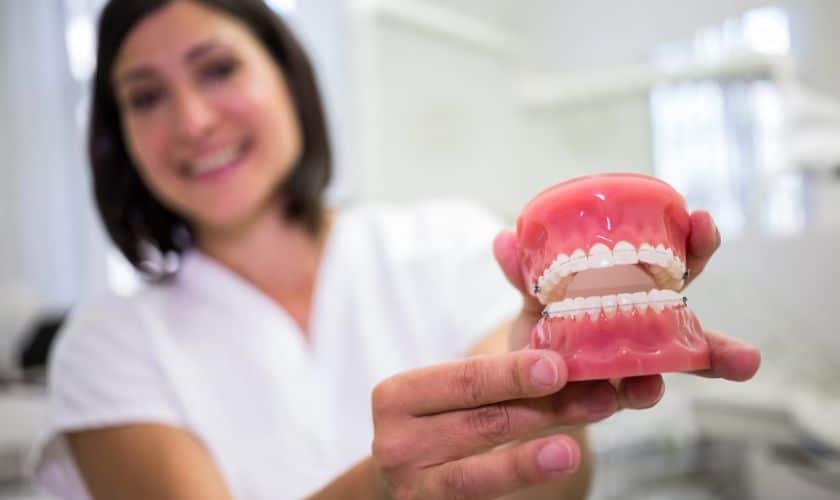
Complete Vs Partial Dentures: Understanding The Differences
Dentures and partial dentures have been used for centuries to replace missing teeth, restore smiles, and improve quality of life. However, many people still don’t know the difference between complete vs. partial dentures or understand their unique benefits. If you’re considering a dental prosthetic but don’t know which one is right for you, this article will break down everything you need to know about these popular tooth replacement options. So sit back, relax, and get ready to learn about complete vs. partial: understanding the benefits and differences between dentures and partial dentures.
What Are Dentures?
Dentures are dental prosthetics that replace missing teeth and surrounding tissues in the mouth. They can be made of acrylic resin, porcelain, or a combination of both materials. Dentures are custom-made to fit each patient’s unique oral structure and mimic the appearance and function of natural teeth.
There are two types of dentures: complete dentures and partial dentures. Complete dentures replace all teeth on either the upper or lower jaw, while partial dentures only replace one or several missing teeth.
Creating a set of dentures typically requires multiple appointments with a dentist or prosthodontist to ensure proper fit and functionality. Impressions are taken, models are created, and adjustments may need to be made during fittings.
Denture wearers must take care to clean their prosthetics regularly to avoid the buildup of bacteria and plaque. Proper cleaning techniques include brushing with special cleaners designed for denture care as well as soaking them overnight in solutions recommended by your dentist.
While some people may experience initial discomfort when adjusting to wearing dentures, they offer significant benefits such as improved speech ability, restored facial aesthetics, better chewing function, and increased confidence in social situations where missing teeth might cause embarrassment.
What Are Partial Dentures?
Partial dentures are a common solution for people who have lost one or more teeth. They are removable dental appliances that consist of replacement teeth attached to a gum-colored plastic base.
Partial dentures can be made from different materials, including acrylic resin and metal. The choice of material depends on several factors, such as the number of missing teeth and the location in the mouth.
One significant advantage of partial dentures is that they can help prevent remaining natural teeth from shifting out of position. This means they not only restore your smile but also maintain your oral health.
To get partial dentures, you will need to visit a dentist who will take impressions and measurements of your mouth to ensure a comfortable fit. Then, the partial denture will be custom-made in a dental laboratory based on these specifications.
Using partial dentures requires some practice since it may feel odd initially when eating or speaking with them in place. However, most people adjust quickly within just a few days.
Partial Dentures are an affordable way to replace missing teeth without undergoing invasive surgical procedures like implant surgery or bridge work.
Difference Between Dentures And Partial Dentures
Understanding the key differences between complete dentures and partial dentures can help you make an informed decision about which option is right for you. Complete dentures are designed to replace all of your teeth, while partial dentures only replace some. Partial dentures are often a more affordable and less invasive option, as they require fewer adjustments and do not involve any surgical procedures.
Ultimately, whether you choose complete or partial dentures will depend on your individual dental needs and preferences. Your dentist can help guide you through the decision-making process and provide expert advice based on their years of experience in the field.
At the end of the day, both complete and partial dentures have their benefits and drawbacks. With proper care and maintenance, either option can offer a comfortable, functional solution for those with missing teeth. By understanding these options in detail, you’ll be better equipped to make an informed choice that meets your unique dental needs.
How Partial Dentures Are Made
Partial dentures are custom-made dental appliances that replace one or more missing teeth. These dental prostheses can be made from a variety of materials, including acrylic resin and metal alloys. The process of making partial dentures typically involves several steps.
Firstly, your dentist will take an impression of your mouth to create a cast or model of your teeth and gums. This is used as a template for creating the partial denture in the lab. Next, the technician will use wax or plastic to set up the teeth on this model according to your specific needs.
Once you approve how it looks and feels in your mouth, they will cast it into metal alloy or make it with acrylic resin material. In both cases, they need to carefully construct each tooth with the proper size and shape so that it fits comfortably against existing natural teeth when placed properly within its position.
After creating either type of prosthesis (metal-base/partial denture vs acrylic/plastic base), final adjustments are usually required before fitting them properly onto patients’ mouths their respective doctor/dentist who has been treating them throughout this process.
What Are The Benefits Of Partial Dentures?
Partial dentures can offer several benefits to those who are missing one or more teeth. First and foremost, they can significantly improve your appearance and self-confidence by filling in gaps and restoring the natural shape of your face. Partial dentures also make it easier to eat and speak, as missing teeth can often cause difficulty with both activities.
Another benefit of partial dentures is that they help to prevent further dental issues from arising. When there are gaps in your mouth due to missing teeth, nearby teeth may start shifting out of place which could lead to problems like bite issues or jaw pain. Additionally, these gaps can cause an increase in bacteria build-up which could ultimately result in gum disease.
Partial dentures are also relatively easy to maintain compared with other types of dental replacements such as bridges or implants. They require regular cleaning just like natural teeth but do not require any special upkeep procedures.
Partial dentures provide a practical solution for those who want an affordable option for restoring their smile’s aesthetics and functionality while minimizing future dental problems associated with tooth loss.
How Partial Dentures Are Used
Partial dentures are removable dental appliances that can replace one or more missing teeth. They work by attaching to the remaining natural teeth using clasps, which help keep them in place. Partial dentures are an excellent solution for those who have lost some of their teeth but still have healthy ones.
Using partial dentures is relatively straightforward. The first step is to make sure they fit properly and comfortably in the mouth. This involves taking accurate measurements of the patient’s mouth and creating a mold from which the partial denture will be constructed.
Once the appliance is ready, it can be inserted into the mouth and secured with clasps to anchor onto existing natural teeth. Patients may need some time to adjust to wearing partial dentures, as they may feel strange at first.
Over time, patients will become accustomed to wearing their new appliance and should practice proper oral hygiene habits such as regular brushing and flossing, along with routine visits with their dentist or prosthodontist.
One advantage of using partial dentures is that they restore normal chewing ability while also improving overall facial appearance by filling gaps left by missing teeth. With proper maintenance and care, these appliances can last for many years without needing replacement.
If you’re looking for a reliable way to replace your missing teeth partially so that you could smile confidently again – look no further than partial dentures.
Finishing Off
As we come to the end of our discussion on partial dentures versus complete dentures, it’s important to emphasize that both options have their unique benefits and differences.
For those who are missing some but not all of their teeth, partial dentures can provide a comfortable and cost-effective solution. They are custom-made to fit your mouth and can be easily adjusted if necessary. Partial dentures also help maintain the alignment of your remaining natural teeth by preventing them from shifting out of place.
On the other hand, complete dentures are recommended for patients who have lost most or all of their teeth. While they may take some getting used to at first, modern advancements in technology have made them more comfortable than ever before. Complete dentures also offer improved chewing ability and speech clarity.
Ultimately, the decision between partial or complete dentures will depend on each individual’s specific needs and preferences. It’s important to consult your dentist or prosthodontist for guidance on which option is right for you.
In summary, whether you opt for partial or complete dentures, both options offer numerous benefits that can significantly improve your overall quality of life. With proper care and maintenance, either type of denture can provide many years of comfort and functionality so that you can continue living life as usual.
Dentures can range in cost from a few hundred dollars to a few thousand, depending on the type of denture you need and the materials used. Your dentist will be able to provide you with an estimate of the cost of your dentures before proceeding. In most cases, dental insurance can help cover some or all of the cost of your dentures.
Generally, four to five appointments are needed to complete the process of fitting dentures. During your first appointment, we will examine your mouth and take measurements and impressions. We will then create a custom set of dentures for you that fit comfortably in your mouth. After that, two to three follow-up appointments may be needed for adjustments and modifications until you are completely satisfied with the fit and function of the dentures.


